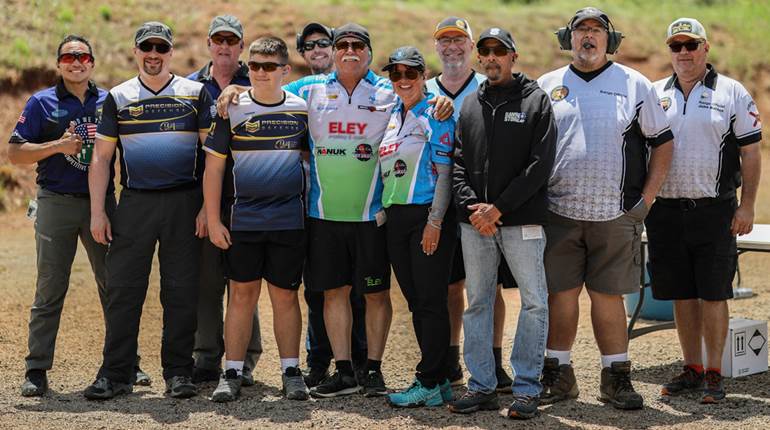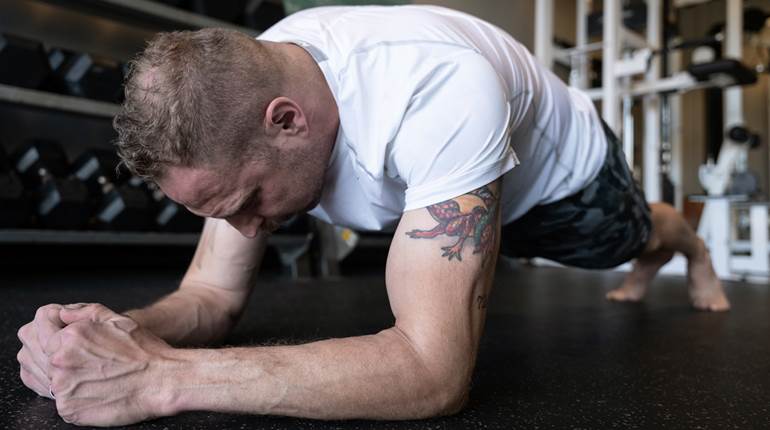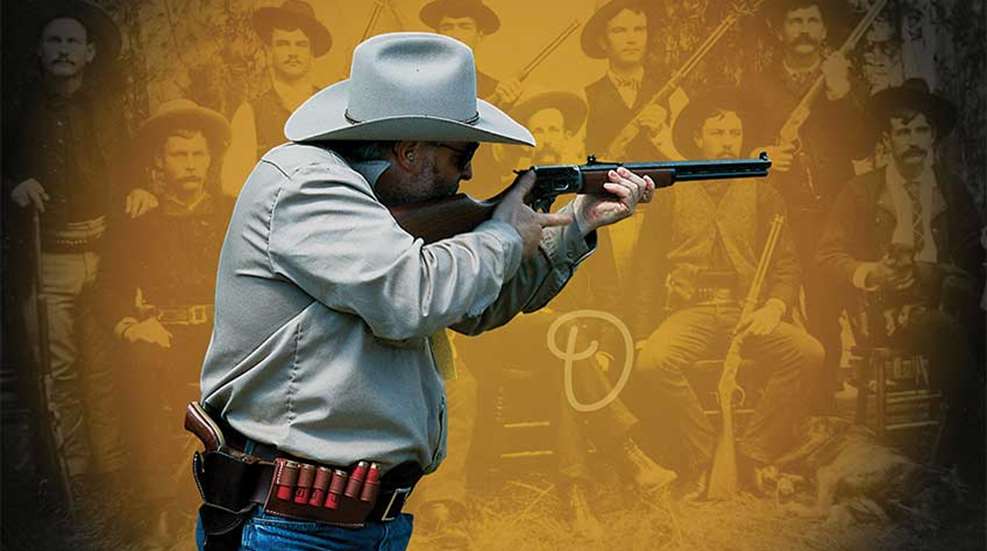
Don't make the mistake I did with Cowboy Action Shooting. I was interested in the shooting, but a bit put off by all the costumes and nicknames, so I stayed away. Then my son Nathan talked me into checking it out. The guy at the range told me on the phone, "We've only got three requirements. No baseball hats, no running shoes and you better have fun." So we gave it a try, and we were hooked.
I have dabbled at competitive shooting most of my adult life, and I can honestly say that Cowboy Action Shooting (CAS) is as much fun as I have ever had busting targets. With CAS there is something for everybody. Some are in it for the lifestyle, the period clothing and the "Old West" personas they adopt. Others are in it for the competitive shooting.
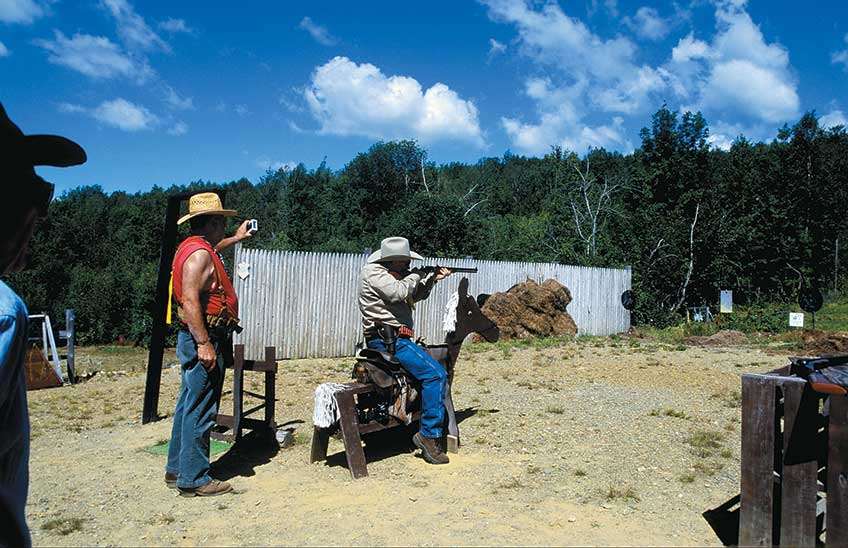
Most are like I am, somewhere in between. I like the shooting best, but I have to admit it's fun to dress up and play cowboy, too. This is the fastest-growing shooting sport for a reason and like one competitor told me, "It's the most legal fun you can have with your clothes on!" My mistake was in waiting too long to give it a try.
Getting Started: Hardware
Here is what will get you started. You will need two single-action revolvers that are center-fire and at least .32 caliber. They can be a modern design with adjustable sights or with fixed sights like the guns of the Old West. So if you and your buddy each have a Ruger Blackhawk, you are ready to shoot in the modern class, which is for guns with adjustable sights. You can arrange to swap back and forth during the match so you both have two guns when shooting.
If you are buying guns, there are lots of affordable, imported Colt-clone single-actions. I have been shooting two Cabela's Millennium revolvers. These .45 Colt revolvers are good shooters and obviously are priced right. Several other companies like Dixie, Cimarron, Uberti, Taylor's & Co. and others offer quality revolvers for just a bit more money. The primary difference is in the finish on the guns. Another option is the Ruger fixed-sight handguns designed for CAS competition. They are not true to the old Colt design, but are legal for the traditional class.
You will need a holster for each and a belt. Again, if you and a buddy have holsters you can wear one cross-draw style so you have it covered, at least to start.
You will need a lever-action rifle in a handgun cartridge. If you have a Marlin or Winchester in .44 Mag. you are all set as long as you use legal ammunition (which I will get to in a minute.) The gun must have open sights or a tang-mounted peep sight. No scopes, no receiver sights.
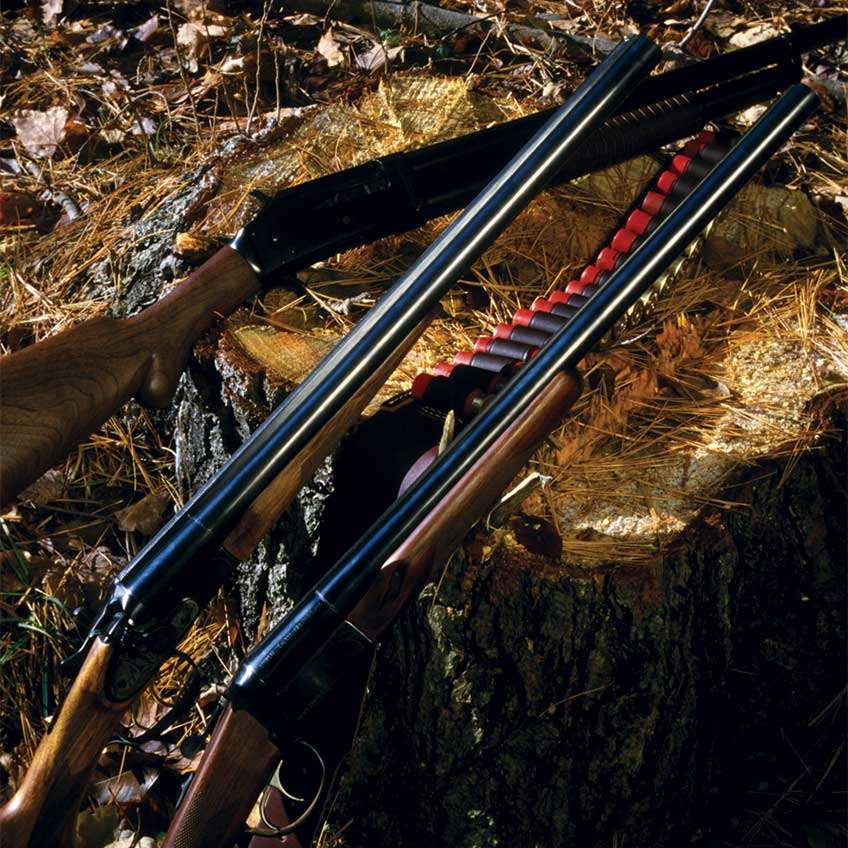
You will need a side-by-side shotgun without ejectors or a pump-action shotgun with an external hammer (which is limited pretty much to the Winchester Model 1897), in 20 gauge through 10 gauge only. Stoeger and a few other companies offer durable doubles for a few hundred dollars. Norinco makes a pump action $97 clone with a similar price.
All ammunition must use lead bullets without gas checks. Revolver loads must not exceed 1,000 f.p.s. velocity, and rifle ammo must not exceed 1,400 f.p.s. There are lots of companies offering ammo designed for CAS shooting that will meet these specifications, including Black Hills, Winchester and Hornady. Only No. 4 birdshot or smaller is allowed for the shotguns: lead only, no steel or other non-lead pellets, and no magnum or high-velocity loads. While you can load from your shirt pocket, you will eventually need a belt or slide to hold your shotgun shells for reloads.
One of the most important aspects of shooting well in any discipline is trigger pull. Don't think that because CAS uses big targets set close that a good trigger pull is not necessary. In test after test I have made of shooters of varying ability and experience with rifles or handguns, one constant shines through: the guns with the best triggers always turned in the best scores no matter who the shooter was. In CAS, a good trigger pull may make the difference between the "just barely" missed target and a hit. A good trigger will also add to your speed. Finally, if all of your guns are adjusted to the same trigger pull weight, the transition from one gun to the next will be smoother.
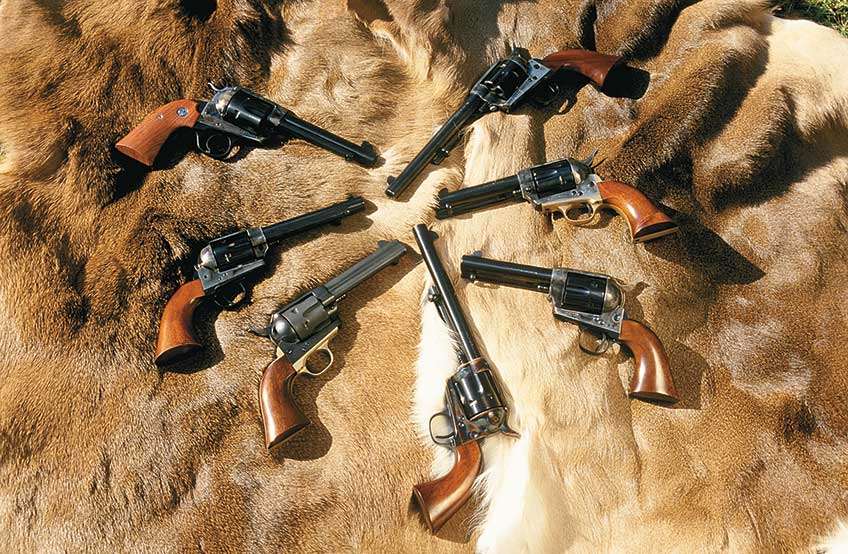
The triggers on most handguns and some rifles can be improved by installing a spring kit. Midway or Brownells will have kits that anybody handy with tools can change on the kitchen table. Or, better yet, take your competition guns to a qualified gunsmith and have him adjust the trigger pull on each gun. A clean, crisp pull that breaks at about 3 lbs. and has little overtravel is about right.
While the gunsmith has the guns, have the actions slicked up as well. CAS is a game of speed, and a smooth-working gun is faster. It will also help your confidence and keep your focus on hitting the targets. A gun with a "hitch in its get-along" can break your concentration.
Speed & Safety
Again, Cowboy Action Shooting is a game of speed. The targets are usually close and usually large. A top-level shooter will not miss many, so it comes down to how fast you can hit them. The faster you hit them all, the higher you will rank in the standings.
But you won't know if you are improving unless you practice with a way to judge your speed and to evaluate your weakness. An electronic timer is not only important during a match, it's an important practice tool as well. I have recently been using the Pocket Pro model from Competition Electronics, and it has helped me a lot in just a few days.
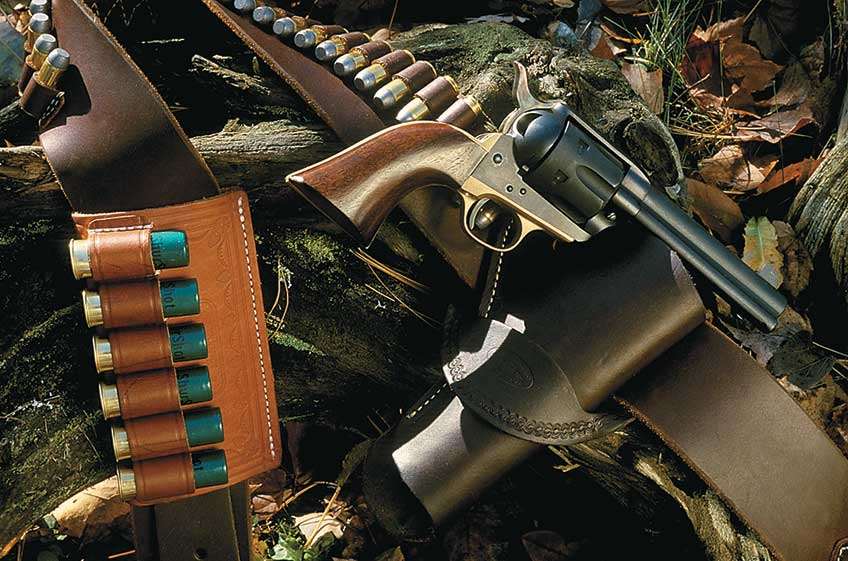
A timer tells you if you are getting faster, and it helps to identify where you need more work. For example, I know that I am slow to get off the first shot, particularly with my handguns. So I drill on drawing at the buzzer and hitting the first target. The timer lets me know if I am improving or just practicing my bad habits.
Even light shotgun loads kick quite a bit, and the effects from recoil can be cumulative. In a match with a lot of shotgun work, the fatigue and soreness from recoil can build up and start to hurt your scores. Some competitors switch to smaller-bore shotguns, but you might also consider using 7/8-oz., low-recoil target loads. The lower velocity is not an important factor with a stationary target, particularly if you just need to hit the target and not knock it over. These light loads are easy to handload, or you can buy them from any of the major ammo makers.
If you practice with steel targets, never shoot at a cratered target. This can lead to dangerous bullet splash-back. CAS rules call for only lead bullets without gas checks to help prevent this dangerous situation, but just as important is to use targets in good condition. Never, ever use a target that has been hit with too large a caliber that has caused a crater until it has been properly repaired.
It goes without saying that quality eye protection should be worn at all times by shooters and observers.
Earmuffs just aren't made to work with cowboy hats. Even if you use a behind-the-head style they are always in the way of the hat. Besides, they really don't look "cool" and, after all, a big part of the spirit of CAS is how you look. Yet, shooting without protection is stupid and not allowed on most ranges. Even very brief exposure to gunfire noise can cause permanent injury.
The protection of choice for CAS is earplugs. The better foam earplugs actually provide the best hearing protection, as they usually have a NRR (noise reduction rating) of 30 dB, and some of the newer styles have an attenuation of up to 33 dB. But only if they are used correctly. All the time I see shooters with the plugs barely inserted into their ears; this is incorrect use of hearing protection. To work best, the foam plugs must be completely inserted into the ear opening, or at least as far as possible.
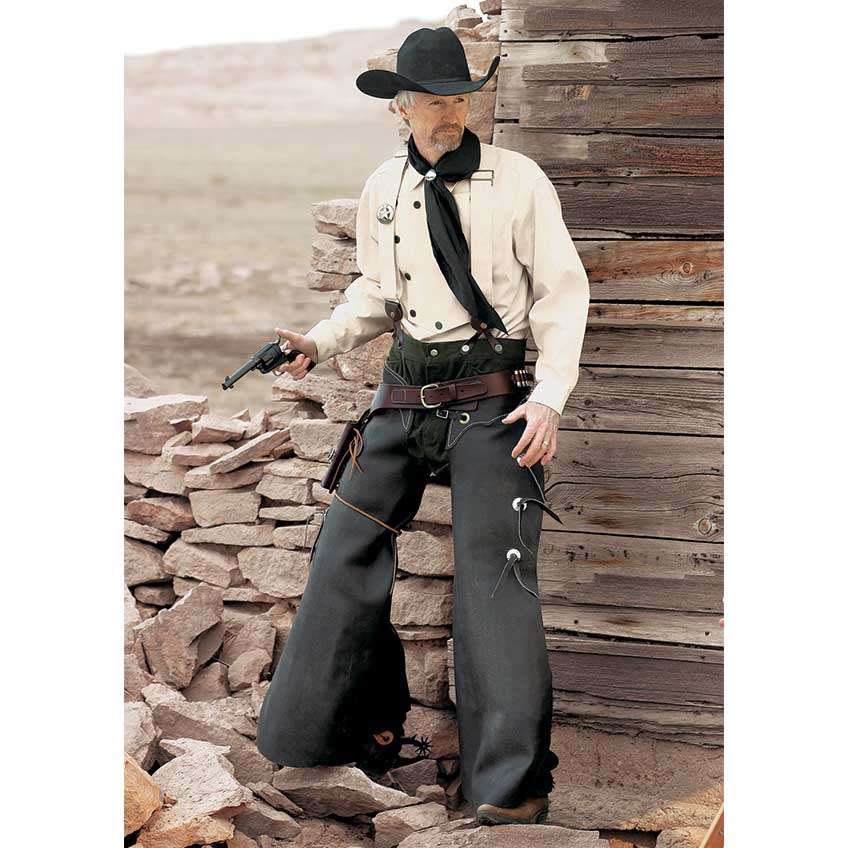
The problem I have is that I already have hearing loss. When I put in earplugs I cannot hear pre-shoot instructions or some range commands while shooting. Most range officers understand this and will give commands loudly, but during the instructions for each stage I will often take out the plugs so I can hear. However, if there is shooting going on at bordering stages, this allows further hearing damage.
My solution is to use electronic hearing protection. There are several on the market that fit inside the ear and are compatible with wearing a cowboy hat. Any loud noise will activate the noise suppression circuitry and protect my hearing, but I can still hear conversation and range commands, which can be a safety factor. In addition, I can also enjoy the social aspect of CAS because I can carry on conversations off the shooting line while still protecting my hearing.
Lots Of Shooting
One of the great things about Cowboy Action Shooting is that you actually shoot a lot. I have competed in other types of shooting where a day of competition consisted of hours and hours of waiting around followed by a few minutes of shooting. In CAS you are burning powder all day long. I like that.
If you are a serious competitor and not a major stockholder in Microsoft then you will soon discover that you need to handload. You need to load a lot of ammo and the quickest way to do that is to use a progressive loader where each pull of the handle results in a completed cartridge.
While just about everybody makes a progressive loader and most that I have used are great, the "king of the progressives" is Dillon. At last count, I was shooting CAS guns in five different calibers and the Dillon has the ability to switch cartridges quickly and easily.
Loading ammo for cowboy action shooting is a bit different from most of the reloading I have been doing in recent years. For the most part, recent handloading doctrine has been aimed at getting the maximum performance out of a cartridge. In Cowboy Action shooting the goal, if anything, is the opposite. Many of the common CAS cartridges are blackpowder cartridges that were designed to work at low pressure with a relatively large volume of powder. If we load them with a small charge of smokeless powder there is a lot of empty case left over, which can lead to problems.
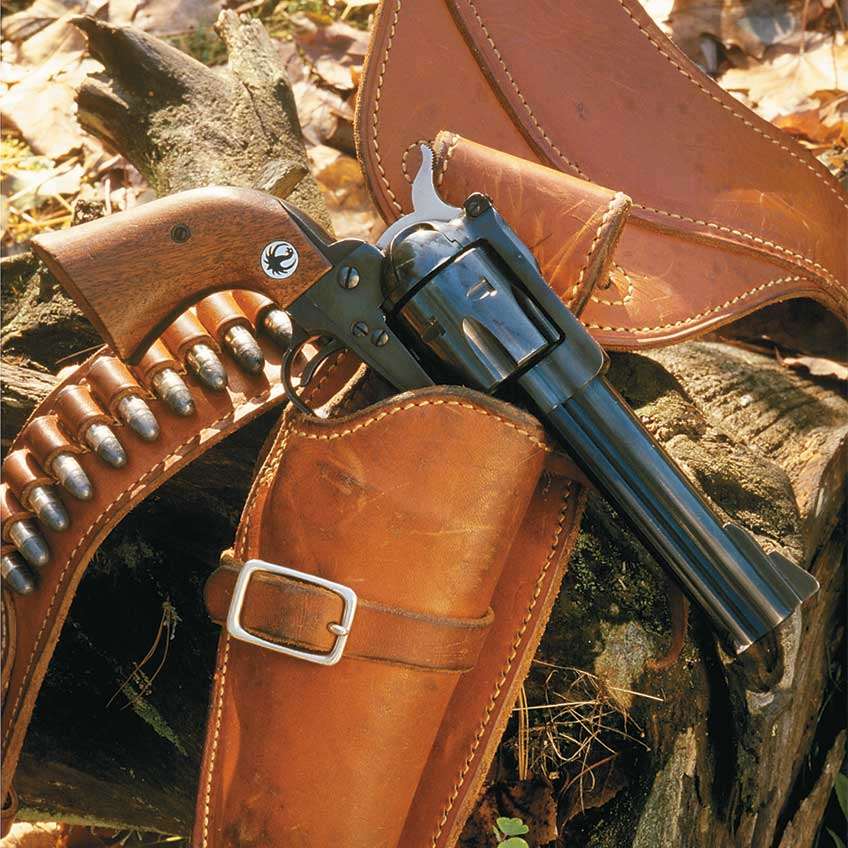
When using smokeless power, better loading density is achieved with a slow-burning powder, because more of it is used. But slow powders do not burn as cleanly as fast powders, and the higher charge weights have an effect on recoil levels. Fast powders produce less recoil because they use a lower charge weight and they tend to burn cleaner, but the low charge weights of the fast powders provide very poor loading density. This can lead to problems with ignition consistency and accuracy.
There have been reports of light powder charges failing to ignite because they were lying on the bottom of the case and the primer flashed over the top. Usually the primer charge alone will push the bullet into the barrel. This will result in serious problems if the gun is fired again without removing the bullet. It is best to use a powder with a burning rate that provides a balance between load density and a minimum of powder debris and fouling.
Don't try to go too low with the loads and never go below the listed starting loads. By going lower, you risk erratic pressure and poor accuracy, not to mention sticking a bullet in the barrel. At the least this will cost you points in a match. At the worst, it could ruin your gun and injure you or somebody else.
Most younger shooters will do well with the rifle's factory sights, however the "period" sights on the reproduction guns are tough for aging eyes to see. If your eyes are over 40, you might consider a tang-mounted peep sight on your rifle. These are much easier to use than the factory installed open sights. Your eye virtually ignores the rear sight because as you look through it the front sight is automatically centered. Lyman and Marble's are two brands of peep sights that I have tried and like.
If you want to give Cowboy Action Shooting a try, contact the governing body for CAS, which is the Single Action Shooting Society, visit sassnet.com.













